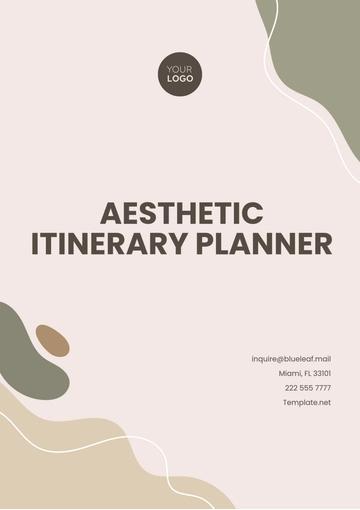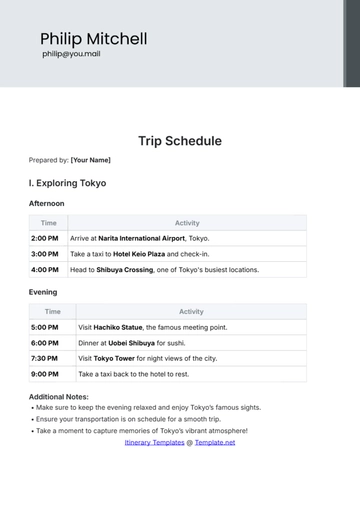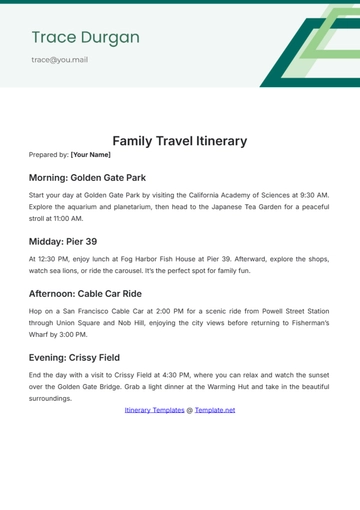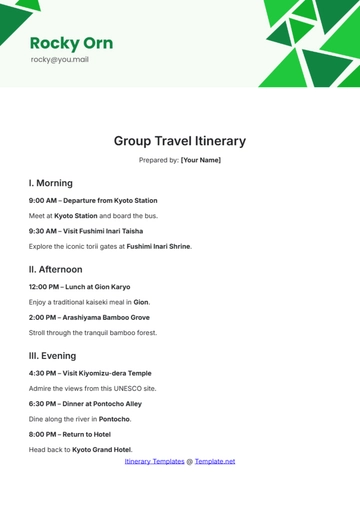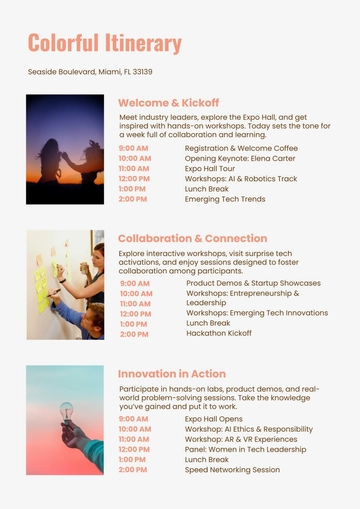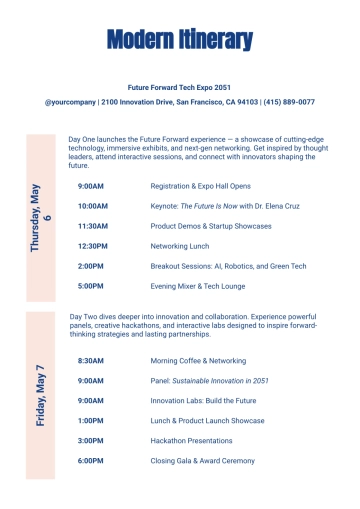Free 10 Day Paris Itinerary

Date: [Date]
Prepared by: [Your Name]
Destination: Paris
The 10-day itinerary for Paris offers a diverse and enriching experience, blending iconic landmarks, cultural explorations, and culinary delights. From the Eiffel Tower to the Louvre Museum, each day presents opportunities to delve into Parisian history and beauty. Visitors can enjoy leisurely walks along the Seine, explore vibrant neighborhoods like Montmartre and Saint-Germain-des-Prés, and venture on day trips to Versailles and Giverny. Throughout the journey, Paris beckons with its charm, inviting travelers to immerse themselves in its romance, culture, and timeless allure.
Day 1: Arrival and Introduction |
|---|
Morning: Arrive in Paris and check into your accommodation.
Afternoon: Start your exploration with a visit to the iconic Eiffel Tower. Take in the panoramic views of Paris from the top.
Evening: Enjoy a leisurely walk along the Seine River and have dinner at a charming café in the Latin Quarter.
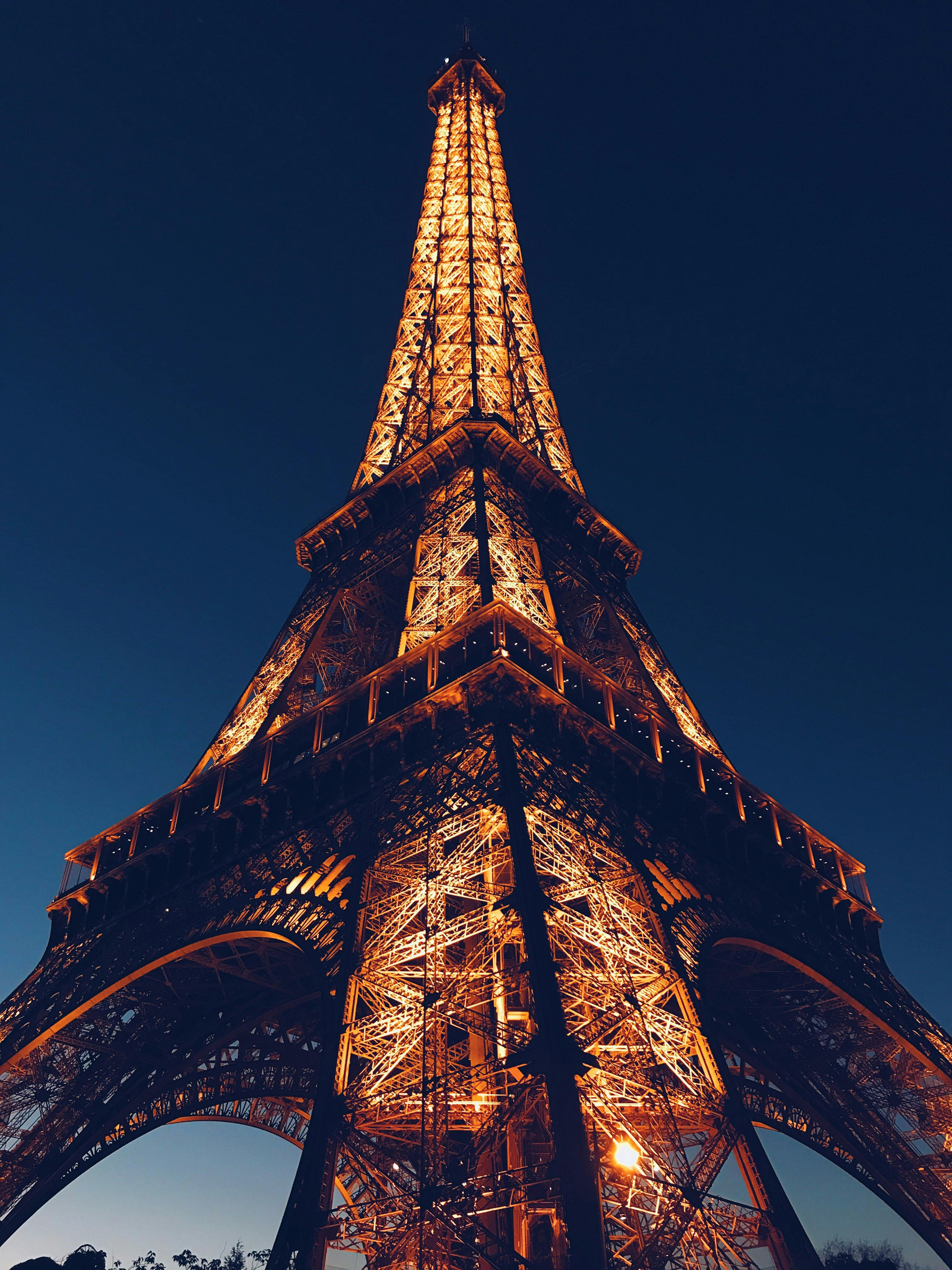
History:
The Eiffel Tower, designed by Gustave Eiffel for the 1889 World's Fair in Paris, stands as an enduring symbol of France's technological prowess and cultural heritage. Despite initial criticism, it became an iconic landmark, celebrated for its innovative design and towering height of 300 meters. Overcoming controversies, the tower evolved with time, serving as a testament to human ingenuity and attracting millions of visitors annually.
When visiting the Eiffel Tower in Paris, there are several things you should avoid doing to ensure a pleasant experience for yourself and others:
Don't engage in illegal activities: This includes things like vandalism, graffiti, or any other form of illegal behavior. Respect the laws and regulations of the area.
Don't climb the tower: Climbing the Eiffel Tower is strictly prohibited for safety reasons. Always use the designated elevators or stairs to access the different levels.
Don't overcrowd or push: The Eiffel Tower can get very crowded, especially during peak tourist seasons. Be patient and courteous to others around you. Avoid pushing or shoving to get ahead in lines or crowds.
Don't litter: Help keep the area clean by properly disposing of your trash in designated bins. Littering not only spoils the beauty of the surroundings but also harms the environment.
Day 2: Louvre and Tuileries Gardens |
|---|
Morning: Visit the Louvre Museum, home to thousands of works of art, including the famous Mona Lisa.
Afternoon: Explore the Tuileries Gardens adjacent to the Louvre. Relax by the fountains and enjoy a picnic lunch.
Evening: Take a stroll along the Champs-Élysées and indulge in some shopping or dine at one of the elegant restaurants.
 History:
History:
The Louvre Museum and the Tuileries Gardens are historic landmarks in Paris, France. The Louvre began as a fortress in the 12th century and evolved into a grand palace before becoming a public museum during the French Revolution. It houses an extensive collection of art and artifacts, including famous works like the Mona Lisa. The Tuileries Gardens were commissioned by Queen Catherine de' Medici in the 16th century as part of the Tuileries Palace. They became popular leisure grounds and survived the palace's destruction in 1871, remaining a cherished public park today. Together, they represent Parisian culture, history, and artistic heritage.
When visiting the Louvre Museum and the Tuileries Gardens in Paris, there are several things you should avoid to ensure a respectful and enjoyable experience for yourself and others:
Don't touch the artworks: It's important to refrain from touching the artworks in the Louvre Museum. Even though some pieces may not be behind barriers, touching can cause damage and degrade the artwork over time.
Don't take flash photography: Flash photography can be harmful to delicate artworks and disrupt the experience of other visitors. Follow the museum's guidelines regarding photography, which usually prohibit flash photography inside galleries.
Don't disturb other visitors: Be mindful of other visitors in the museum and gardens. Avoid loud conversations, disruptive behavior, or blocking pathways while exploring the exhibits or strolling through the gardens.
Day 3: Montmartre and Sacré-Cœur |
|---|
Morning: Explore the bohemian neighborhood of Montmartre. Visit the Sacré-Cœur Basilica for breathtaking views of the city.
Afternoon: Wander through the cobblestone streets of Montmartre and discover its artistic charm.
Evening: Experience the vibrant nightlife of Montmartre with dinner and live music at a local bistro.
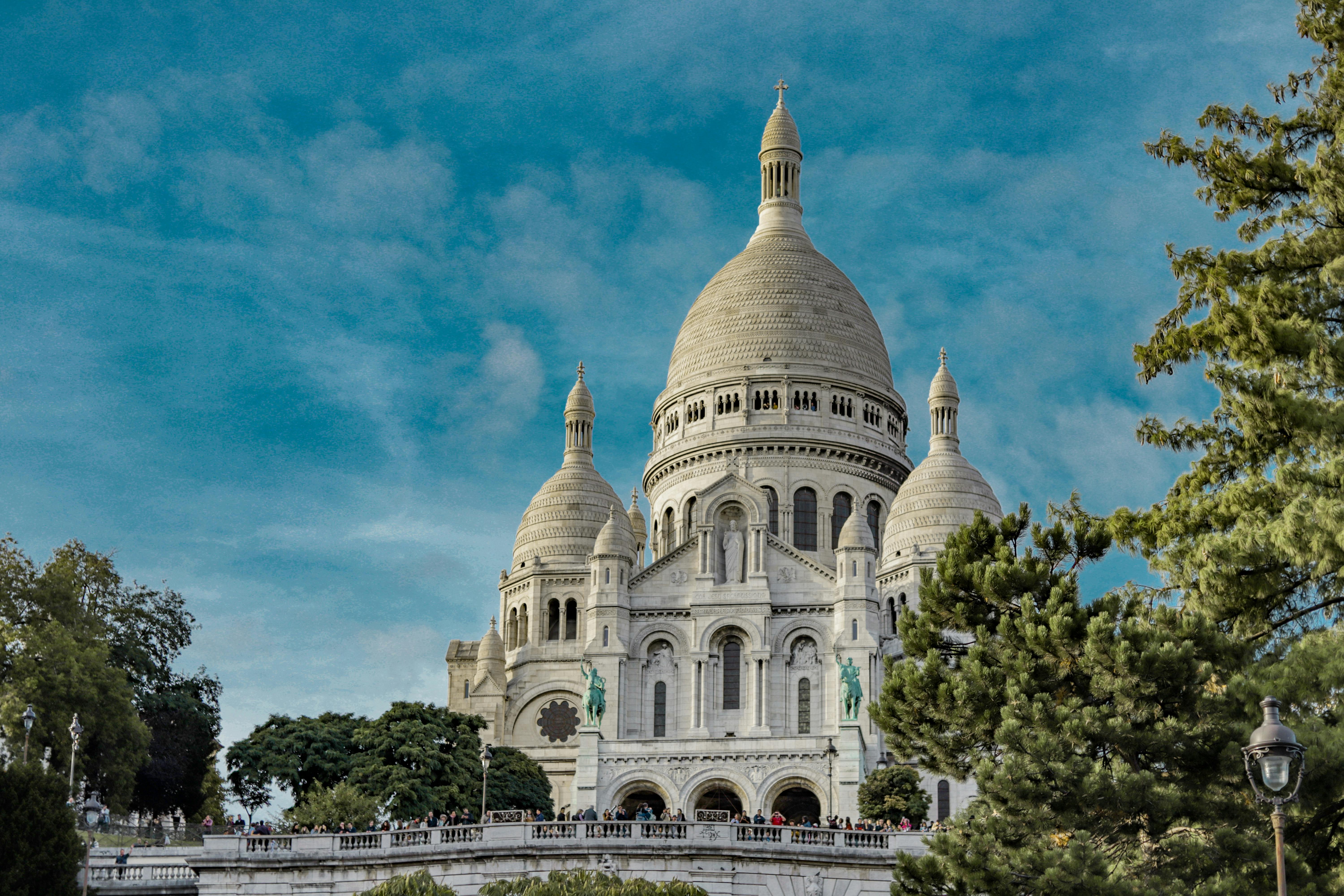
History:
Montmartre, a historic hill in Paris, France, has a rich heritage dating back to ancient times. It became a haven for artists and bohemians in the late 19th century, fostering a vibrant artistic community with famous residents like Picasso and van Gogh. The Sacré-Cœur Basilica, constructed atop Montmartre, symbolizes national penance after the war and serves as a significant religious and cultural landmark. Today, Montmartre retains its artistic charm, attracting visitors with its winding streets, cafés, and panoramic views of Paris.
While Montmartre is a beautiful and culturally rich area to explore, there are a few things visitors should avoid doing to ensure a positive experience:
Avoid Overpaying: Be cautious of scams, overpriced souvenirs, and inflated prices at restaurants and cafes, especially in tourist-heavy areas like Place du Tertre.
Respect Sacred Spaces: When visiting the Sacré-Cœur Basilica, maintain a respectful demeanor, especially during religious services. Avoid loud conversations and disruptive Behavior.
Watch Out for Pickpockets: Like many tourist destinations, Montmartre can attract pickpockets. Keep your belongings secure and be mindful of your surroundings, especially in crowded areas.
Be Mindful of Noise: Montmartre is a residential area, so be considerate of the residents by keeping noise levels down, especially late at night.
Day 4: Versailles |
|---|
Full-Da Trip: Take a day trip to the Palace of Versailles. Explore the opulent palace, the Hall of Mirrors, and the beautiful gardens.
Evening: Return to Paris and relax with a quiet dinner in a cozy restaurant.
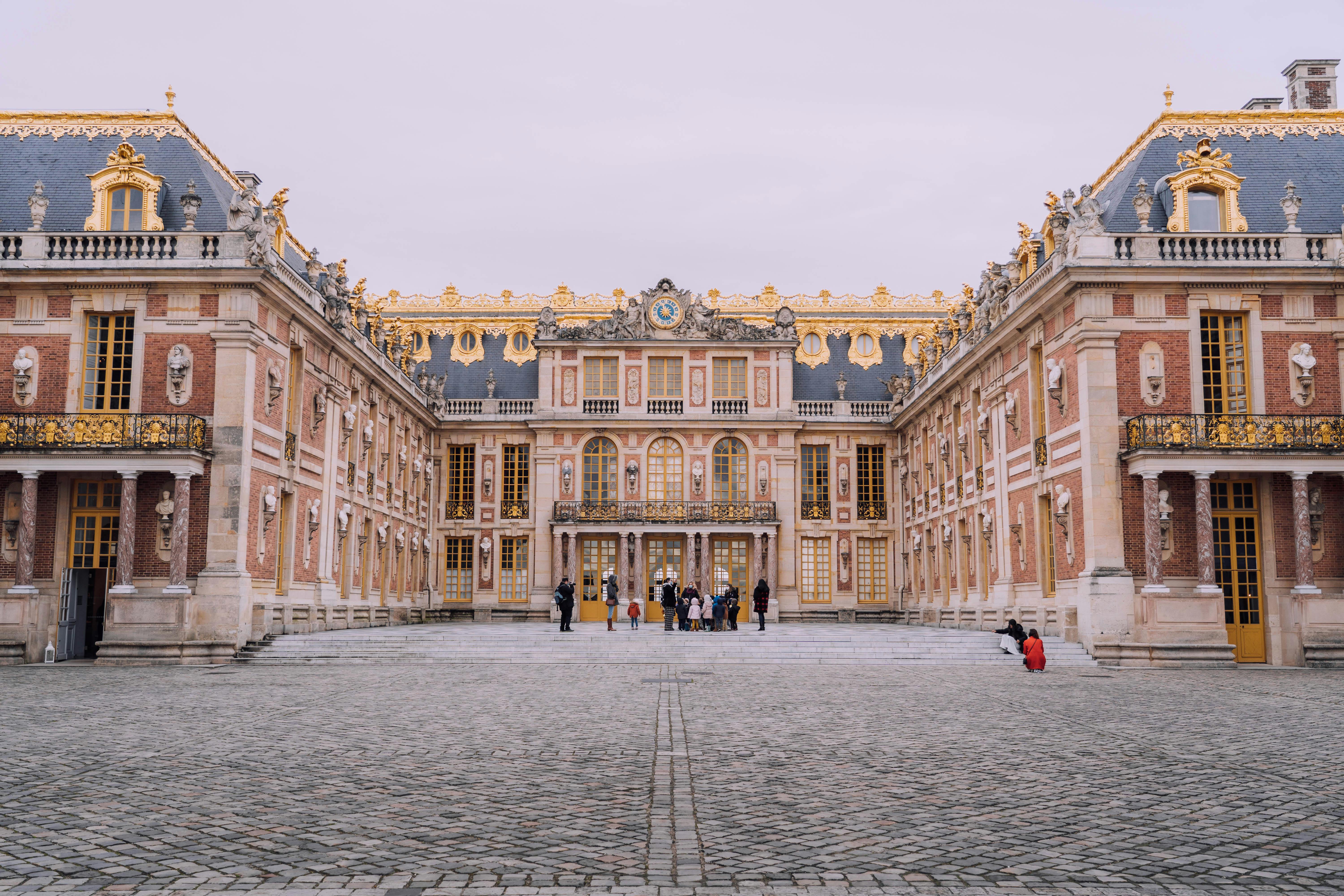
History:
The Palace of Versailles, originally a hunting lodge, was transformed into a grand palace by Louis XIV to symbolize absolute monarchy in France. Its construction involved renowned architects and landscapers. Versailles became the center of French political and cultural life during Louis XIV's reign. The Treaty of Versailles was signed there in 1919, marking the end of World War I. During the French Revolution, the palace played a significant role, leading to the downfall of the monarchy. Today, it remains a UNESCO World Heritage Site and a major tourist destination, reflecting its historical and architectural significance.
When visiting the Palace of Versailles, there are several things to avoid to ensure a pleasant and respectful experience:
Crowded Times: Versailles can get extremely crowded, especially during peak tourist seasons. To avoid large crowds, consider visiting during weekdays or arriving early in the morning.
Not Planning: Versailles is vast, with the palace, gardens, and surrounding grounds to explore. Plan your visit, including purchasing tickets online to skip the long queues and deciding which areas you want to prioritize.
Underestimating the Time Needed: Exploring Versailles thoroughly can take an entire day, especially if you want to see both the palace and the gardens. Allocate enough time to appreciate the beauty and history of the site without feeling rushed.
Disrespectful Behavior: Versailles is a historic and culturally significant site. Respect the rules and regulations, such as not touching the artwork, not stepping on the grass in the gardens, and maintaining a quiet and respectful demeanor in the palace and chapel.
Day 5: Saint-Germain-des-Prés and Luxembourg Gardens |
|---|
Morning: Explore the historic neighborhood of Saint-Germain-des-Prés. Visit the famous cafés and browse the quaint boutiques.
Afternoon: Relax in the Luxembourg Gardens. Enjoy a boat ride on the pond or simply unwind amidst the greenery.
Evening: Attend a classical music concert or enjoy a performance at one of Paris's theaters.
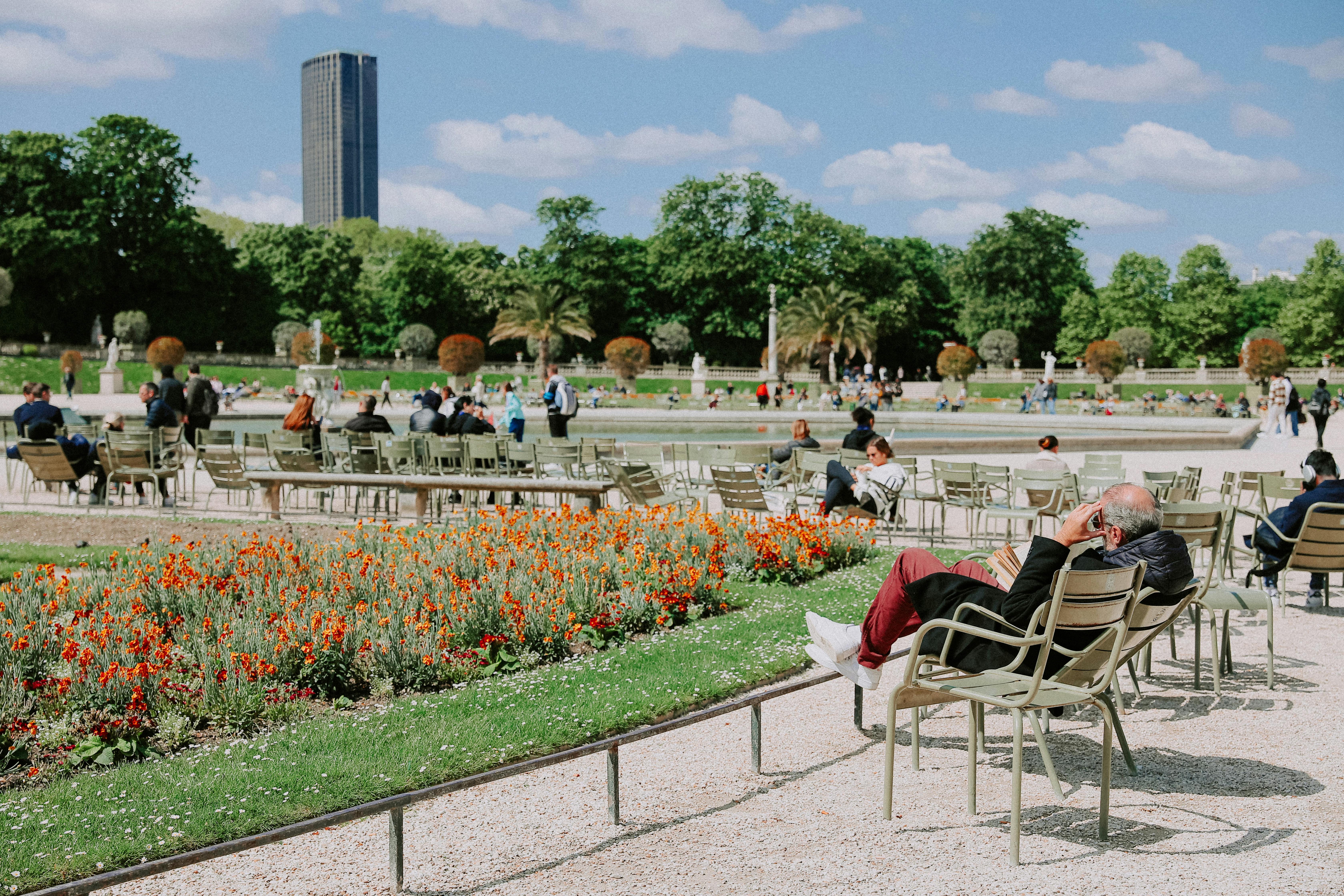 History:
History:
Saint-Germain-des-Prés is one of Paris's oldest churches, dating back to the 6th century, and was part of the Benedictine Abbey of Saint-Germain-des-Prés, a renowned center of learning in medieval Europe. The church underwent various renovations over time and remains a significant cultural and historical site in Paris.
The Luxembourg Gardens, adjacent to the Luxembourg Palace, were created in the early 17th century by Queen Marie de' Medici. Inspired by Italian gardens, they feature formal French landscaping and serve as a popular public park with statues, fountains, and cultural events. The palace served different functions during the French Revolution, including as a prison and legislative assembly.
When visiting Saint-Germain-des-Prés and Luxembourg Gardens in Paris, there are a few things to keep in mind to ensure a pleasant experience:
Respectful Behavior: Avoid disruptive behavior in Saint-Germain-des-Prés and Luxembourg Gardens, as they are both places of historical and cultural significance. Respect the tranquility of the church and the peaceful atmosphere of the gardens.
Mindful Interaction: Be mindful of the surroundings and other visitors. Avoid loud conversations, especially inside Saint-Germain-des-Prés, as it is a place of worship. In the gardens, be considerate of families, individuals, and other groups enjoying the space.
Respect for Property: Refrain from damaging or defacing any property, including statues, monuments, or vegetation in Luxembourg Gardens. Treat the environment with care and leave it as you found it.
Day 6: Musée d'Orsay and Île de la Cité |
|---|
Morning: Visit the Musée d'Orsay, home to an impressive collection of Impressionist and Post-Impressionist masterpieces.
Afternoon: Explore the Île de la Cité, including the majestic Notre-Dame Cathedral and the picturesque Sainte-Chapelle.
Evening: Dine at a charming bistro in the Marais district and sample traditional French cuisine.
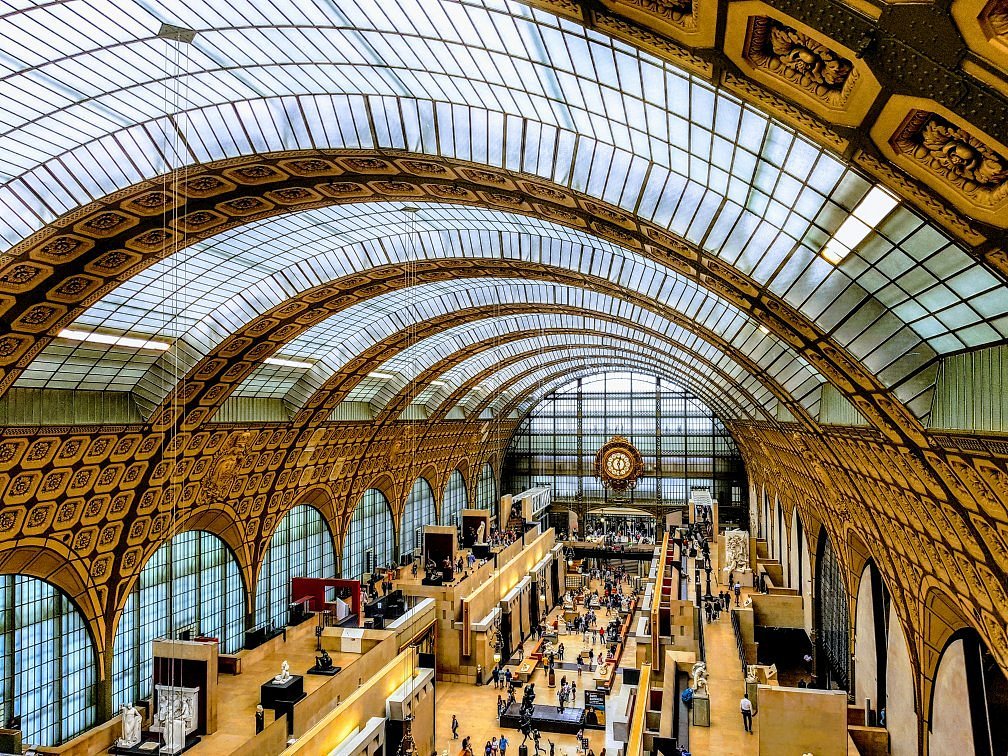 History:
History:
The Musée d'Orsay in Paris was originally a railway station, repurposed into an art museum in 1986, housing French art from the mid-19th to early 20th centuries. Île de la Cité, one of Paris's natural islands in the Seine River, is its historic heart, home to landmarks like Notre-Dame Cathedral and witnessing significant events throughout history. Both contribute to Paris's cultural richness and global appeal.
When visiting the Musée d'Orsay and Île de la Cité in Paris, there are a few things you should avoid doing to ensure a respectful and enjoyable experience:
Disrespecting the Artifacts: In the Musée d'Orsay, avoid touching the artwork or leaning on display cases. Respect the museum's rules regarding photography, as flash photography or touching artwork can damage delicate pieces.
Disrupting Other Visitors: Keep noise to a minimum and be mindful of other visitors in both the museum and Île de la Cité. Refrain from speaking loudly or engaging in disruptive behavior that could disturb others' experiences.
Disregarding Safety Regulations: Follow all safety regulations and guidelines provided by museum staff and authorities when visiting Île de la Cité and the Musée d'Orsay. This includes staying within designated areas and following any emergency procedures if necessary.
Day 7: Le Marais and Pompidou Center
Morning: Explore the trendy Marais district. Visit the Place des Vosges, the Jewish Quarter, and the trendy boutiques.
Afternoon: Discover modern art at the Pompidou Center. Explore its innovative architecture and diverse exhibitions.
Evening: Enjoy dinner at a rooftop restaurant overlooking the city skyline.
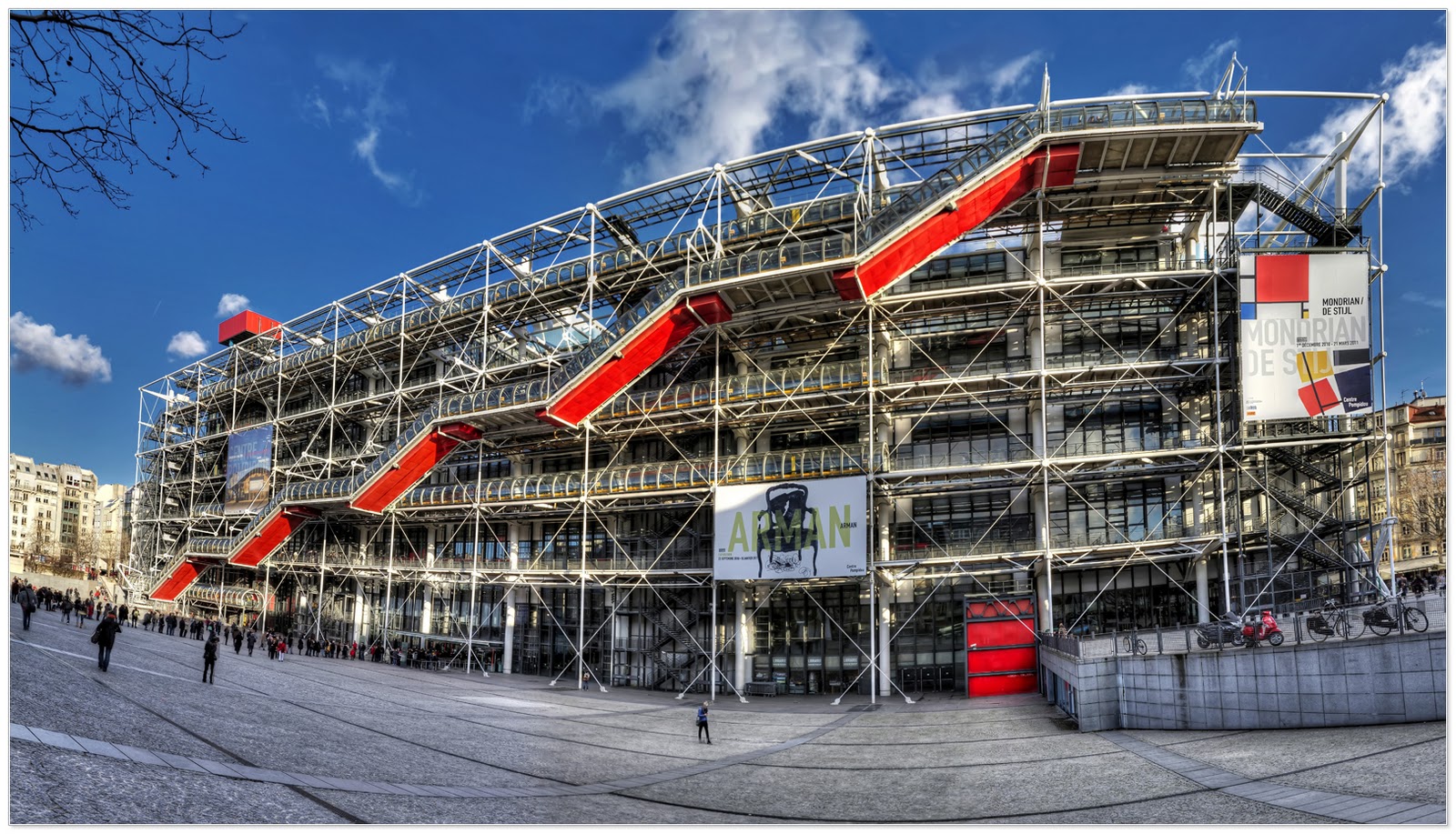 History:
History:
Le Marais is a historic district in Paris known for its medieval origins, aristocratic residences, Jewish heritage, and vibrant cultural scene. It has evolved into a trendy neighborhood with preserved historic architecture, boutiques, and a lively LGBTQ+ community.
The Pompidou Center, named after former French President Georges Pompidou, is an iconic modern art museum and cultural center. Designed by Renzo Piano and Richard Rogers, its innovative architecture features exposed pipes and ducts. The center houses the National Museum of Modern Art and hosts avant-garde exhibitions, performances, and events, making it a major cultural hub in Paris.
When visiting Le Marais and the Pompidou Center in Paris, here are some recommendations: |
Explore the Streets: Wander through the narrow, cobblestone streets of Le Marais and explore its charming architecture, boutiques, cafes, and galleries.
Visit Place des Vosges: This historic square is the oldest planned square in Paris and is surrounded by elegant townhouses and arcades. It's a great spot for a stroll or a picnic.
Pompidou Center
Modern and Contemporary Art: Explore the Pompidou Center's extensive collection of modern and contemporary art, including works by artists such as Picasso, Matisse, and Duchamp.
Day 8: Seine River Cruise and Sainte-Chapelle |
|---|
Morning: Take a scenic Seine River cruise and admire Paris's iconic landmarks from the water.
Afternoon: Visit the stunning Sainte-Chapelle with its intricate stained glass windows.
Evening: Experience French gastronomy with a gourmet dinner at a Michelin-starred restaurant.
 History:
History:
The Seine River Cruise offers tourists and Parisians a scenic journey along the historic waterway, showcasing iconic landmarks such as the Eiffel Tower and Notre Dame Cathedral. Its popularity grew in the 20th century, providing a unique perspective on Paris's cultural heritage.
Sainte-Chapelle, a medieval Gothic chapel commissioned by King Louis IX in the 13th century, stands on the Île de la Cité. It houses precious relics, including the Crown of Thorns, and is renowned for its stunning stained glass windows depicting biblical scenes.
Day 9: Day Trip to Giverny |
|---|
Full Day Full-DayTrip: Visit the charming village of Giverny, home to Monet's Garden and House. Explore the beautiful gardens that inspired his paintings.
Evening: Return to Paris and enjoy a relaxing dinner at a traditional French brasserie.
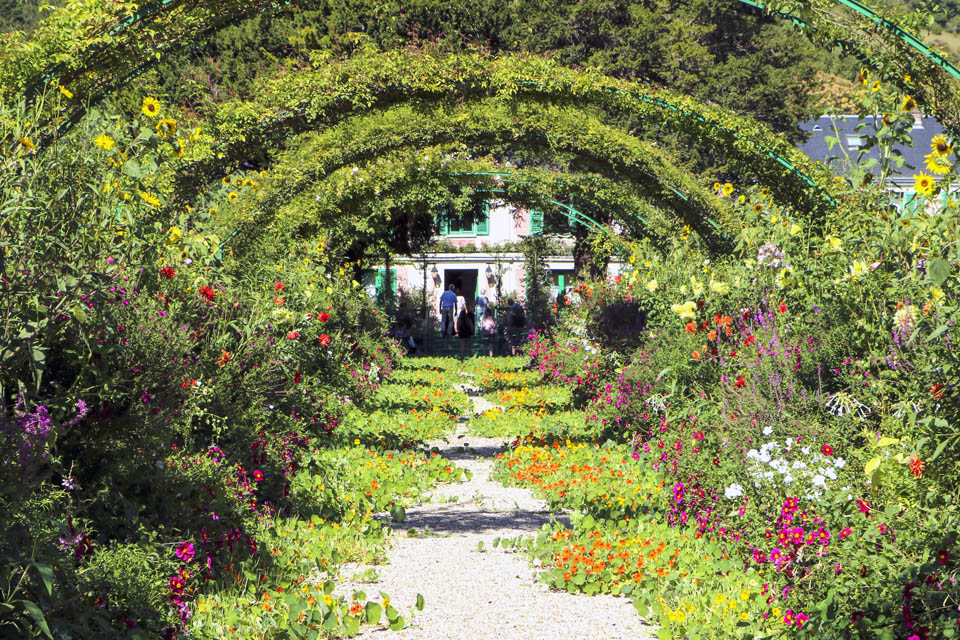 History:
History:
Giverny, a village in Normandy, France, gained fame as the home of the renowned Impressionist painter Claude Monet. Monet moved there in 1883 and meticulously designed the gardens surrounding his pink farmhouse, which became central to his later works. The water lily pond, Japanese bridge, and flower gardens served as inspiration for many of his famous paintings. Giverny attracted other artists and became a hub of artistic activity.
When visiting Giverny, there are a few things to keep in mind to ensure a pleasant experience |
|---|
Crowds: Giverny can get quite crowded, especially during peak tourist seasons. To avoid the largest crowds, consider visiting early in the morning or later in the afternoon.
Respect the Gardens: While exploring Monet's gardens, it's essential to respect the flora and fauna. Avoid stepping on flower beds, touching delicate plants, or disrupting the natural environment.
Photography Etiquette: Be mindful of other visitors when taking photographs. Avoid blocking pathways or obstructing views while capturing the beauty of the gardens.
Stay on Designated Paths: Stick to designated pathways while exploring the gardens to avoid damaging plants and disturbing wildlife. Follow any signage or instructions provided by staff or guides.
Day 10: Departure |
|---|
Morning: Begin your day with a stroll through a local market. Paris boasts numerous markets offering a variety of goods, from fresh produce to artisanal crafts and antiques. Wander through the stalls, taking in the sights, sounds, and smells of the bustling market atmosphere. Engage with local vendors, sample fresh pastries, cheeses, and fruits, and perhaps pick up some unique souvenirs to remember your time in Paris by.
Afternoon: After exploring the market, spend your afternoon soaking in the enchanting ambiance of Paris. Depending on your departure time, you may choose to visit any last-minute sights that pique your interest. Paris is home to world-renowned landmarks such as the Eiffel Tower, Notre-Dame Cathedral, Louvre Museum, and Montmartre, each offering its own distinct charm and historical significance.
Departure: As the day draws to a close, bid farewell to the enchanting city of Paris and head to the airport for your onward journey. Reflect on the unforgettable experiences and cherished memories you've gathered during your time in the City of Light. As you depart, carry with you the essence of Paris the romance, the culture, and the timeless beauty that will linger in your heart long after you've said goodbye. Departure marks the end of one chapter but also the beginning of countless stories and adventures yet to unfold. Bon voyage.
Additional Reminders
Please note that some locations require booking, especially the Michelin-starred restaurants.
It’s advisable to cross-check open timings of attractions as they may vary.
Be sure to wear comfortable shoes for walking.
Don't forget to bring proper identification and related documents.
- 100% Customizable, free editor
- Access 1 Million+ Templates, photo’s & graphics
- Download or share as a template
- Click and replace photos, graphics, text, backgrounds
- Resize, crop, AI write & more
- Access advanced editor
Embark on a Parisian odyssey with our 10 Day Paris Itinerary, exclusively on Template.net. This editable and customizable guide ensures an unforgettable journey through the City of Lights, featuring iconic landmarks, charming neighborhoods, and delectable cuisine. Tailor your experience effortlessly with our Ai Editor Tool for the ultimate Paris adventure.


